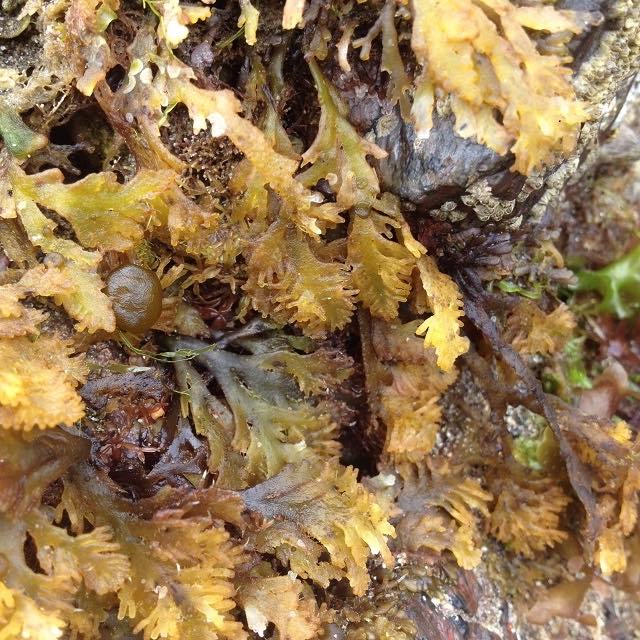While walking toward the coast path from Lizard recently I got talking to a fascinating botanist who told me that the slope he was looking at was home to twelve different species of clover, if I remember correctly. He also pointed out some other plants, many of them rare and most of them with spectacular names. It made me think about our inshore algal diversity so when I found myself at Kennack Sands last weekend I decided to do a one minute search to see what I could find.
I recorded ten species of seaweed adjacent to and in a small rockpool on the midshore. There were plenty more but sixty seconds flies! The only green seaweeds I saw were Ulva lactuca (sea lettuce) and Ulva intestinalis, aptly known as gut weed which becomes apparent when you see it floating in a rockpool. Brown seaweeds dominated the area in terms of mass which is typical of the midshore.
These included serrated wrack (Fucus serratus), named because its fronds have serrated edges and bladder wrack (Fucus vesiculosus), so called because of the air sacs that help it to stay afloat. The deviously named oyster thief Colpomenia peregrina was also present. This brown seaweed is shaped like a deflated balloon. As it grows in volume it can detach from whatever it is growing on and float away, and if it happens to be growing on an oyster….well, it may steal it!

What the red seaweeds lacked in volume, they made up for in number and had I stayed for longer I would have found many more I am sure. In the rockpool were numerous tufts of coral weed, Corallina officinalis. This calcareous seaweed can be abundant in some rockpools, giving them a beautiful candyfloss hue. Alongside the coral weed were small patches of encrusting Lithothamnion spp.. I also found pincer weed, Ceramium spp., which has tiny pincer like ends on its delicate fronds and little sausage weed, Lomentaria articulata. As the name suggests, it is an articulated weed that looks like a string of tiny juicy little sausages, although some people also call it bunny ears. Last but no means least was a carpet of pepper dulse (Osmundea spp.) which gives a pungent, peppery smell if you rub it between your fingers.
Although I have often written these species down as part of shore surveys it was only in this context that I thought of not a collection of rocky shore algae, but another collection of truly wonderful names. So to the mystery botanist on the hill, thank you for inspiring me to reflect.
Published: July 2016
Author: Charlotte Marshall (NE) Marine Lead Adviser
